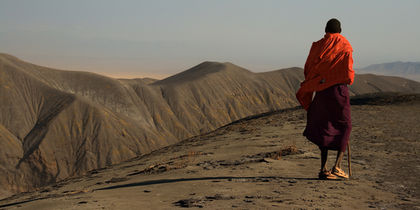Tanzania - International trade

Despite numerous Structural Adjustment Programs designed to increase exports and encourage growth and investment, Tanzania has suffered from a chronic negative balance of payments since the late 1970s. Moreover, instead of progressively diminishing, the balance of payments deficit has actually increased. Indeed, in the past 5 years, the country's deficit has grown from US$297.5 million in 1997, to US$528.5 million in 1999.
Tanzania's major exports include coffee, cotton, tea, sisal, tobacco, cashew nuts, and minerals. Together, agricultural exports accounted for 56.8 percent of all exports in 1996, while manufactured products only constituted 16.5 percent of exports. In the same year, the countries of
| Trade (expressed in billions of US$): Tanzania | ||
| Exports | Imports | |
| 1975 | .374 | .780 |
| 1980 | .511 | 1.252 |
| 1985 | .247 | 1.324 |
| 1990 | .415 | 1.027 |
| 1995 | .639 | 1.619 |
| 1998 | .674 | 1.454 |
| SOURCE: International Monetary Fund. International Financial Statistics Yearbook 1999. | ||
the EU collectively purchased the largest percentage share of Tanzanian exports (42 percent). Interestingly, however, Tanzania's dependence on Europe as a market for exports has substantially declined, as other regions, such as Asia and Africa, have become more important. In 1989, Africa accounted for 4.2 percent of all exports, while Asia accounted for 22.9 percent. By 1996, these figures respectively rose to 11.5 percent and 27.4 percent.
Tanzanian imports range the gamut of products, including machinery, transport and equipment ( capital goods ); oil, crude oil, petroleum products, industrial raw materials ( intermediate goods ); and finally, textiles, apparel, and food and foodstuffs ( consumer goods ). In 1996, capital goods comprised 36 percent of imports, intermediate goods 38 percent, and consumer goods 26 percent. Countries of the European Union are the major sources of imports, though their importance has declined considerably as the importance of Asian and African countries have concomitantly increased. In 1989, the EU (then the European Community) accounted for 58.4 percent of Tanzanian imports, Africa 3.9 percent, and Asia 13 percent. By 1996, the figures respectively changed to 42 percent, 11.5 percent, and 27.4 percent. Important African and Asian trading partners (for both exports and imports) include Japan, India, Hong Kong, China, Singapore, Kenya, Zambia, and Burundi.
One of the major criticisms of the IMF/World Bank sponsored SAPs is that trade liberalization will lock countries like Tanzania into a pattern of sustained agricultural exportation at the expense of industry and commerce. At the most basic level, reduction of barriers will mean countries with emerging manufacturing industries will have to compete with much more competitive and efficient manufacturing industries from abroad. The result could be a long-term structural entrenchment of the only economic area in which Tanzania and similar countries can compete internationally: the agricultural sector. This is disadvantageous because international terms of trade accord higher prices to products that contain value added (meaning that they undergo a degree of manufacturing), such as capital goods, than those that contain less or no value added, such as agricultural commodities. Thus, a country like Tanzania that depends, in large part, upon agricultural exports and higher value added imports, will suffer from a negative balance of trade.
This seems to be precisely the situation in Tanzania, where even the pro-trade Economist Intelligence Unit attributes the recent deficit increase to weak international commodity prices for coffee and tea, 2 of the country's most important exports. The free trade rationale that all countries will benefit by individually trading that which they produce more efficiently than their counterparts conspicuously overlooks this crucial dilemma.
At the same time, however, trade liberalization at the regional level may offer positive benefits for participating countries as it can potentially enable them to realize the gains of competition and specialization in an environment characterized by a more level playing field. In other words, if 2 countries such as Tanzania and Mozambique partake in free trade, the competition will be more even, thereby enabling each to exchange a wide array of products, including manufactures and industrial commodities. This, in turn, will facilitate increased production capacity, preparing them to compete more effectively at a global level. Currently, Tanzania is a member of 2 separate regional trading arrangements (RTAs): the East African Community and the Southern African Development Community. The former includes Tanzania, Kenya, and Uganda; the latter comprises Tanzania, Zaire, Zambia, Malawi, and Mozambique.
this article is great for international economics girl